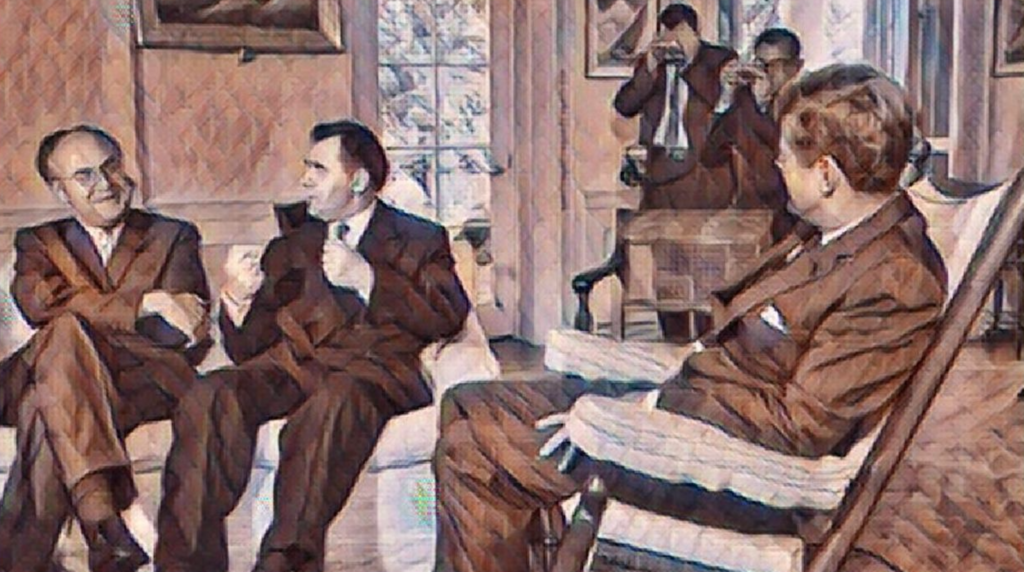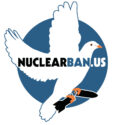
The myth of the Cuban Missile Crisis is that President Kennedy stared down Premier Khrushchev, and Khrushchev blinked first. We were told that the USSR removed nuclear missiles from Cuba because the US was ready and willing to unleash nuclear war.
Only nine men at the time knew the truth about what really saved the world in October, 1962: that the USSR agreed to remove its nuclear missiles from Cuba in exchange for the US agreeing to remove its nuclear missiles from Turkey.
In other words, it was good old-fashioned diplomacy and negotiation. Out of the limelight of the press and the public eye, Kennedy and Khrushchev made a secret back-channel agreement to remove missiles from each other’s doorsteps. That’s what ended the crisis.
The tragedy is that the truth has only been slowly revealed, and incompletely absorbed. Most people still believe that the mere threat of using nuclear weapons is enough to make sure these weapons are never used. And the Cuban Missile Crisis is trotted out as the prime example of how so-called “nuclear deterrence” works. But here’s what really happened.
On October 16, 1962, Kennedy was informed that nuclear missiles capable of reaching Washington, DC, were being based in Cuba — on America’s doorstep. Since late 1961, the US had been threatening the USSR with missiles on their doorstep, installing nuclear missiles near Izmir, Turkey. These missiles could reach Moscow within minutes, with nuclear warheads roughly 100 times the size of the bombs that destroyed Hiroshima and Nagasaki. They were just as much a threat to the Soviet Union as the missiles in Cuba were a threat to the United States.
Over the following 13 days, there was breathtakingly fast escalation. The US launched a naval blockade of Cuba, made plans for a for a full-scale invasion, and prepared to send as many as 3,500 nuclear weapons to their targets in the Soviet bloc from airplanes, silos, and submarines. Some of these weapons were more than 1,000 times the size of the bombs dropped on Hiroshima and Nagasaki in 1945. For the first time ever, US nuclear forces were placed on DEFCON2 alert status, one step away from nuclear war.
Meanwhile, Russian and Cuban soldiers prepared to defend the island and destroy the US Guantanamo base with nuclear weapons. Yes – nuking their own country. Castro had already indicated to Khrushchev his willingness to sacrifice the whole of Cuba if necessary. They also prepared to nuke New York City and other US targets.
Both Presidents knew that a full-scale nuclear war would likely lead to 200 million casualties in North America and double that number in the Soviet bloc and China. But until the eleventh hour, both men stood ready to take that risk.
Among the 13 times we’ve come alarmingly close to an all-out nuclear war that could have ended human civilization as we know it, October 27, 1962, was the most dangerous. Four things happened, any one of which could have triggered all-out nuclear war: A US spy plane was shot down over Cuba. A Soviet submarine almost fired a Hiroshima-sized nuclear torpedo at the US Navy. An aerial drama unfolded between US nuclear-armed fighter jets and Soviet fighter jets over the North Pole. A Soviet cargo ship was intercepted in international waters and shelled with flares.
That same day, one thing happened to avert nuclear war.
Khrushchev wrote, “You are disturbed over Cuba…because it is 90 miles by sea from the coast of the United States of America. But Turkey adjoins us; our sentries patrol back and forth and see each other. Do you consider, then, that you have the right to demand security for your own country and the removal of the weapons you call offensive, but do not accord the same right to us?”
And Kennedy responded with an even swap.
It was nearly 30 years before the truth about the Cuban Missile Crisis became public. Those still living confessed to having kept the secret and having lied to the press, to Turkey and to Congress – even to doctoring Bobby Kennedy’s posthumous published memoir.
Lyndon Johnson went to his grave never knowing about the secret deal that ended the crisis. His handling of the Vietnam War was consistent with a belief in accepting nothing short of military victory.
President Nixon was not told either. He made explicit nuclear threats and seemed willing to actually use nuclear weapons to end the Vietnam War at one point.
President Reagan was also kept in the dark. He “played tough” with the Soviet Union, using harsh rhetoric and building a massive nuclear re-armament program. Both Nixon and Reagan used the threat of nuclear war to try to bend the Soviet Union to their will, not knowing that President Kennedy had struck a deal with his Soviet counterpart rather than start a nuclear war.
Even now, 60 years later, the myth of President Kennedy’s machismo during the Cuban Missile Crisis lives on. Is this myth influencing President Biden as he “stands firm” against Vladimir Putin, arming Ukraine while refusing to negotiate?
The risks are as high today as they were in 1962, if not higher. Anything could happen at any moment in Ukraine (or elsewhere) to tip the balance towards all-out nuclear war. We are all suffering under the dangerous and wholly mistaken belief that threats and intimidation – and a refusal to negotiate – are what solve dangerous international crises like this.
On this 60th anniversary of the last time the world was this close to disaster, we can only hope that more people in positions of power and influence will discover the real lessons from the Cuban Missile Crisis.
For the fully annotated story of what happened in 1962 and its implications for today, see Cuban Missile Crisis: How Diplomacy – Not Deterrence – Saved the World in 1962 at NuclearBan.US.
Timmon Wallis PhD
